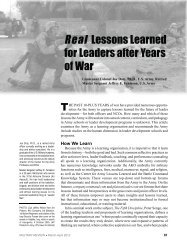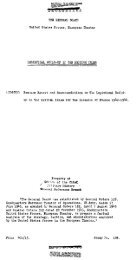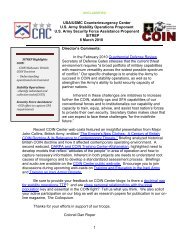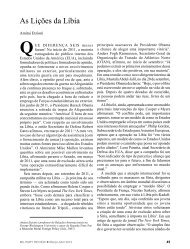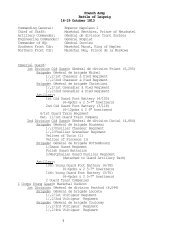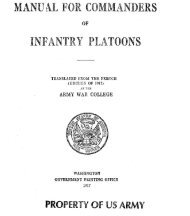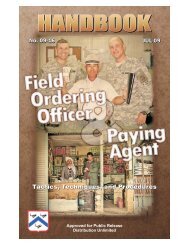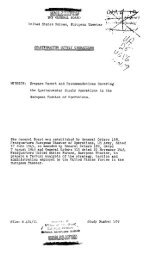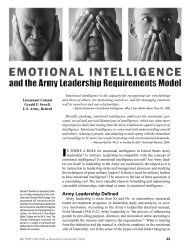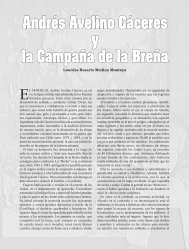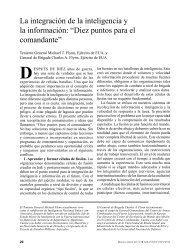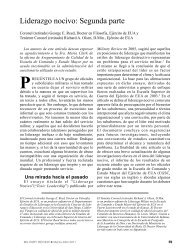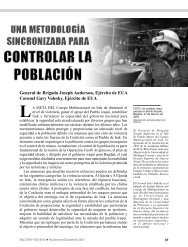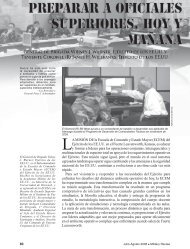TM 9-280 1944 Caliber .22 Rifles, All Types - US Army Combined ...
TM 9-280 1944 Caliber .22 Rifles, All Types - US Army Combined ...
TM 9-280 1944 Caliber .22 Rifles, All Types - US Army Combined ...
Create successful ePaper yourself
Turn your PDF publications into a flip-book with our unique Google optimized e-Paper software.
DESCRIPTION AND FUNCTIONING<br />
<strong>TM</strong> 9-<strong>280</strong><br />
13-14<br />
up and out of the magazine. When the bolt is pushed forward, the<br />
lug on the bottom of the bolt head pushes the cartridge forward until<br />
the rim is released at the end of the magazine lips and forced up under<br />
pressure of the magazine spring into the recess in the bolt head face<br />
and under the extractor. Further closing of the bolt pushes the cartridge<br />
into the firing chamber of the barrel.<br />
f. As the bolt sleeve contacts the back of the receiver, the bolt<br />
sleeve lock plunger is depressed, thus unlocking the bolt sleeve from<br />
the handle and permitting the handle to be turned down. At the same<br />
time, the lug of the cocking piece engages the sear in the bottom of<br />
the receiver holding the sear and firing pin stationary. As the handle<br />
is turned downward, the bolt assembly continues its forward movement<br />
as the cam on the locking lug bears against the locking shoulder<br />
in the receiver. The rifle is now cocked and ready to fire.<br />
NOTE: On the M1 Rifle, as the bolt head latch passes the rear of<br />
the receiver bridge, the latch plunger is depressed. This action lowers<br />
the back end of the bolt head latch and raises the front end unlocking<br />
the bolt handle from the bolt head, thus permitting the handle to<br />
be turned down.<br />
g. As the finger piece of the trigger is drawn to the rear, its contact<br />
with the receiver is transferred from the normal bearing surface on<br />
the trigger to the trigger heel, which gives a creep to the trigger. On<br />
this preliminary pull, the trigger pivots on its pin, the bearing engaging<br />
the receiver and partially rotating the sear around its pin, slightly<br />
depressing the sear nose. The contact of the heel completes the<br />
preliminary pull. Further pressure on the trigger releases the sear<br />
nose from the cocking piece and the firing pin is driven forward by<br />
the mainspring to strike the cartridge.<br />
NOTE: In firing, unless the bolt handle is turned fully down, the<br />
cam on the cocking piece will strike the cocking cam on the bolt, and<br />
the energy of the mainspring will be expended in closing the bolt instead<br />
of on the cartridge head. This prevents the firing of a cartridge<br />
before the bolt is closed.<br />
Section III<br />
REMINGTON RIFLE, CAL. <strong>.22</strong>, MODEL 513T<br />
14. GENERAL.<br />
a. The Remington Rifle, cal.<strong>.22</strong>, Model 513T (fig. 39), differs from<br />
the U.S. rifles in its detailed construction of parts although it is<br />
basically the same in mechanical operation and functioning.<br />
41



